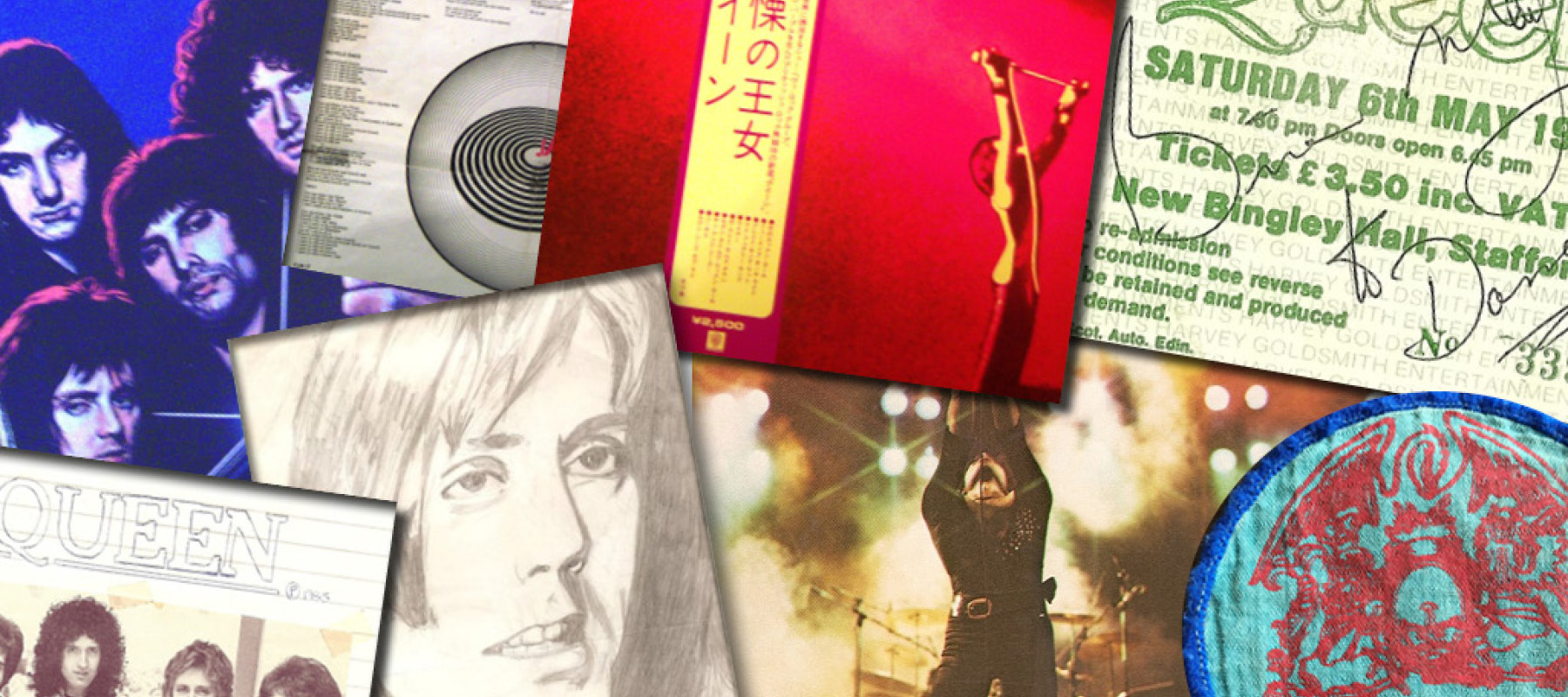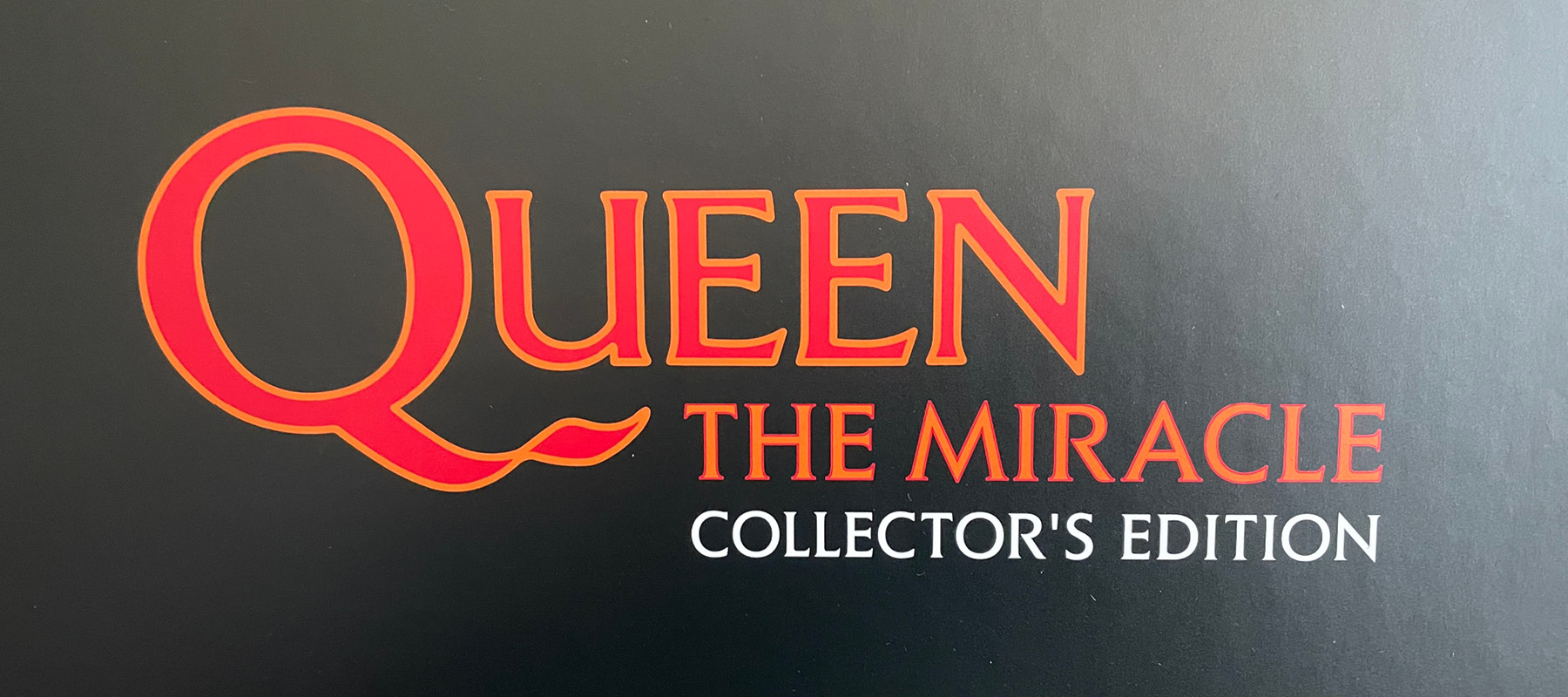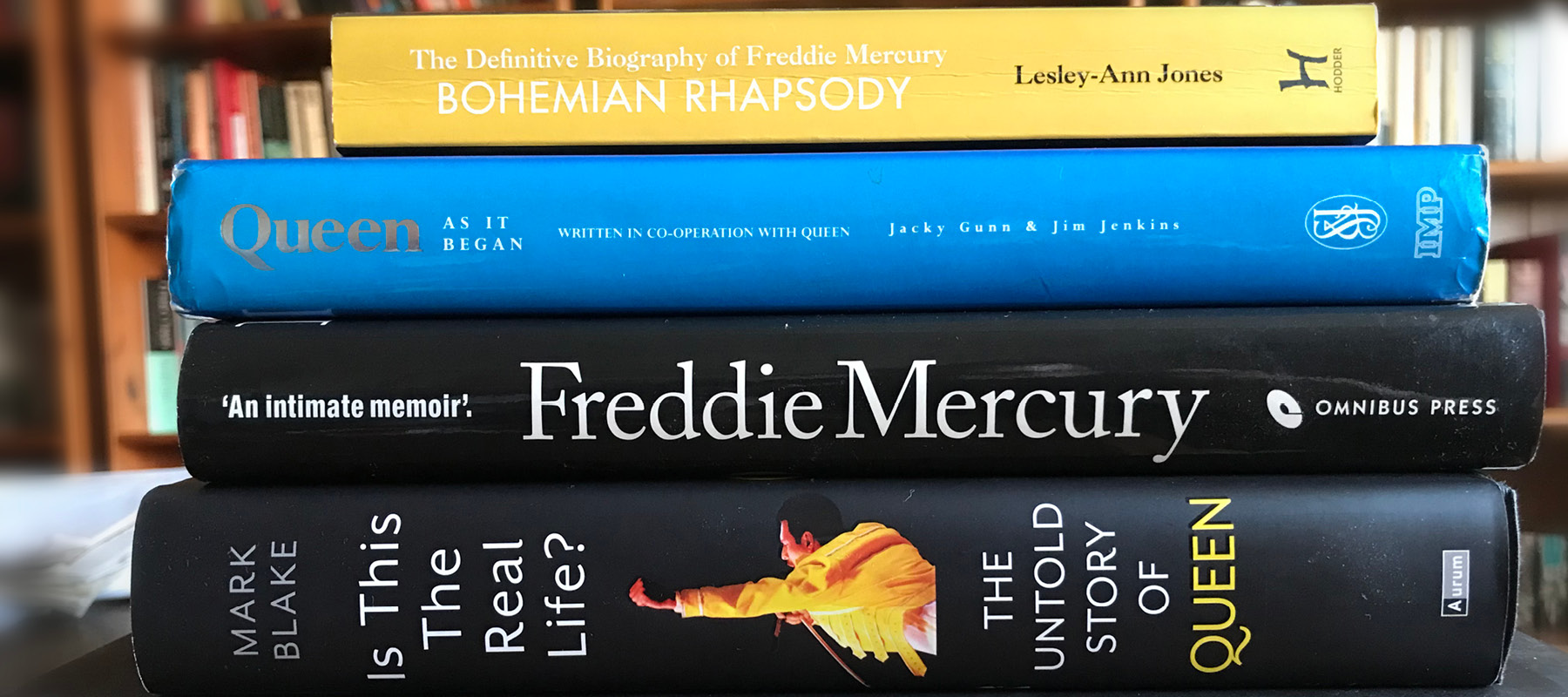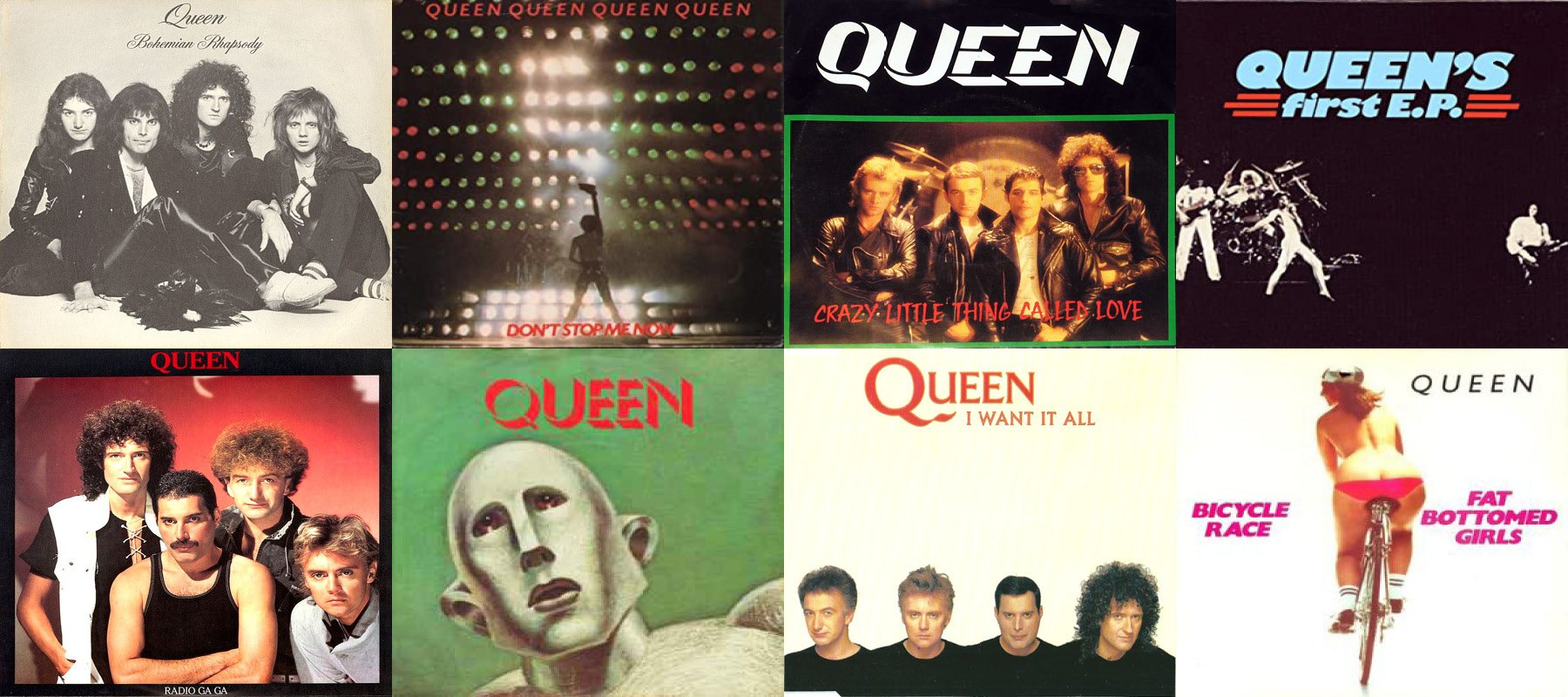Queen On Fire — Live at the Bowl: Reviewing the Review

I was interested to see what, if anything, had changed — my Queen knowledge, my thoughts and opinions, other contextual information — in the fifteen years since I wrote my review of the Queen On Fire – Live at the Bowl DVD. At the time, I titled the review ‘A Crown Jewel’ and awarded the DVD five stars out of five. It was published on Amazon in November 2004, a week or so after the DVD’s release.
As I write now (July 2019), the DVD is not available from the official online shop, though the audio is available for download. It was never officially released on Blu-ray.
The text of the original review is in italics.
For Queen obsessives, the advent of remastered CD and DVD has served to keep the – ahem – ‘magic’ alive long after the demise of the band itself as a creative unit. The latest release is this long-awaited Milton Keynes Bowl concert, recorded June 1982, on the European leg of the Hot Space tour. A heavily-edited film of the show was first used, improbably enough, on Channel 4’s alternative music show The Tube in 1983; that edit has since featured regularly on VH1. Individual songs have also appeared in video montages and compilations. Now, after the success of the Live at Wembley Stadium DVD, this is the MK show in its entirety – warts ‘n’ all – and very welcome it is too.
The opening sentence was obviously written in the resigned belief that the days of Queen as a going concern were over. Though purists would doubtless question the whole notion that Queen are again a creative unit, the ‘Queen’ brand is certainly very much alive and kicking. The beginnings of the Queen/Paul Rodgers collaboration were in 2004, leading to major tours in 2005 and 2008 and to the The Cosmos Rocks album. Even more successful has been the Queen/Adam Lambert collaboration. That’s not to mention the longevity of the We Will Rock You stage musical and the phenomenal success of the Bohemian Rhapsody film.
Alas, contrary to my remark in the last sentence, not quite every wart was included in the DVD. Check out the clip in this link [at roughly 2:22] which was left in the original Channel 4 broadcast but polished out of the Live at the Bowl release.
Previous ‘live’ offerings from Queen too often suffered from heavy handed editing, remixing and general interference, sometimes due to the limitations of technology at the time but more often in a mistaken attempt at quality assurance. The nadir is 1986’s Live Magic which employs a ghastly mixture of omission and (unbelievably) song editing to fit a two-hour show onto LP. A close second is the video of 1985’s Rock in Rio triumph: Brian May’s guitar is hopelessly buried in the mix and the overall band sound is dull and blunted. Now, as this DVD demonstrates, even on basic home equipment, digital remastering brings a raw freshness to the sound as well as sharpness and colour to the picture.
I think this paragraph generally holds true, though whether the freshness and sharpness I applauded at the time is simply the result of digital mastering I now realise I am not expert enough to say. I have written elsewhere about the failure of official releases to capture and authentically convey the live Queen sound. The release of the Live at the Rainbow ’74 box set in 2014 set a new benchmark. Despite the “limitations of technology at the time” [my words], both of the 1974 concerts sound superb, particularly the 31 March gig. I still regard the Procession/Father to Son opening as probably the most powerful beginning to a live album that I am aware of, though to be fair the Milton Keynes opener (Flash/The Hero) is terrific too.
After the pomp and grandeur of two world tours between 1977 and 1979, their stage show by 1982 had adopted a pared-down, ‘hot and spacey’ feel to match their changing musical direction. The grandiose ‘Crown’ lighting rig in 1977-78 and the ‘Pizza Oven’ roof of lights that spectacularly adorns the Live Killers sleeve were replaced by relatively modest, moving banks of lights and powerful spots. Musically, while the new songs from the sharply criticised Hot Space album undoubtedly benefit from a live work-out, this viewer well remembers their muted greeting by the crowd at the previous week’s Elland Road concert.
Absolutely. Back Chat and Staying Power both sound superb. It baffles me why one of these two songs was not released as the lead-off single for the Hot Space album. For the subsequent US and Japanese tours, other Hot Space tracks were given a workout, notably Put Out the Fire and Calling All Girls. Even Body Language didn’t sound completely awful played live.
As it happens, I have recently been listening to Genesis bootlegs from roughly the same period: the muted crowd reaction to the newer Abacab material is similar to what I describe here. The early 80s were a tough time to be a fan of rock giants from the 1970s!
However, Queen always delivered onstage and this DVD magnificently captures the power of Queen live. Freddie is in particularly mischievous form, teasing and energising the crowd (“are you ready…are you ready brothers and sisters?”). The consummate showman bounds across the stage and athletically utilises gangways incorporated into the stage set to project the band in larger venues. Though Freddie did not personally write a Queen blockbuster after 1979’s Crazy Little Thing Called Love, he was still fit and lithe, aged 35 in 1982, the singing voice strong and assured. Only later did a combination of wear and tear, age and smoking lead to difficulties at the end of long shows and tours. Before AIDS (first identified in 1983), it is also interesting to note the overtly sexual nature of much of his onstage banter, strutting and posing.
The obvious error in the above paragraph is the one relating to Freddie’s voice. When I wrote those words, I hadn’t really heard many bootlegs of Queen shows, so I only had official releases and what I remember actually hearing live to go on — neither of which is (sad to say) a reliable guide. Having listened to a lot of bootlegs since 2004, I now realise how inaccurate the statement is. In reality, from the later-70s (at the very latest), Freddie was regularly struggling with his voice on stage, especially towards the end of long tours and particularly towards the end of shows.
Japan definitely got the shortest of short straws in this respect – unfortunate, as they were particularly keen to film the band’s concerts. With the exception of the February 1981 Budokan shows, all of the band’s tours to Japan followed on from extensive touring in other parts of the world. Listen, to take just one example, to how Freddie struggles to sing Bohemian Rhapsody during the 1979 Japanese dates. You can point to lots of similar examples from the 1982 and 1985 tours. We Are the Champions always presented problems — Roger to the rescue! — as did (from 1984 onwards) Radio Ga Ga.
Now think about the official releases. Montreal 1981 — voice superb — came after a month-long break. Milton Keynes 1982 — voice superb — came after a three-day break on a mini-British tour of just four shows. Live Aid too — voice superb — came after a very lengthy break. Hammersmith 1979 — not an official release (yet, but we live in hope!) but generally acknowledged to be a superb vocal performance — came after a four-day break (and Christmas dinner).
Jumping ahead to Wembley 1986, there were relatively long breaks between most shows on the Magic Tour. But Freddie was older, the stage was enormous and the filmed Saturday show followed on from the additional Friday concert. It’s not too bad vocally, but there’s lots of stuff sung in — what is it called? — the lower register, masked by the impressive-sounding cod-operatic delivery. True, Budapest was a stronger vocal performance than Wembley, but it came on the back of a five-day break.
The performance – and the filming – is not quite as polished as 1986 and casual buyers might begin their collection with the aforementioned Live at Wembley Stadium DVD. It was 1985’s Live Aid that truly elevated Queen to superstar status. In 1982, the set list still contained obligatory new-album material and hard-rocking (but relatively uncommercial) stage favourites like We Will Rock You (fast) and Sheer Heart Attack. For the Queen connoisseur, however, there is much to enjoy. Particular highlights include Somebody to Love: a singalong favourite and live staple from 1976, it was inexplicably left off the Live Killers LP and finally dropped in 1986. If Queen’s finest hour (or, rather, 17 minutes) at Live Aid can be criticised, it is surely the inclusion of Hammer to Fall at the expense of Somebody to Love.
Absolutely. The whole show sounds great, and the performance of Somebody to Love is indeed a highlight, as is The Hero opening, Fat Bottomed Girls — “You made an asshole outta me!” — and Save Me, to choose just three. I also still think I am correct about the Live Aid set.
One criticism I don’t mention is that the final twenty minutes or so feel a touch predictable. Once Freddie plays the opening bars of Bohemian Rhapsody, you can guess how things are going to pan out. The close of the show could have done with some refreshing by this point, I think. After all, albeit with some moving things around on occasion (and the introduction along the way of Another One Bites the Dust), Tie Your Mother Down / Sheer Heart Attack / We Will Rock You / We Are the Champions had been the basis of the latter part of the show since late-1977.
We now know that earlier in the Hot Space tour they appear to have mixed things up a bit — Tie Your Mother Down and Sheer Heart Attack were both tried out at the beginning of the set after The Hero, for example, and Liar was even played in its entirety on a couple of occasions — but by the time of the British shows they had reverted to the ‘usual’ ending. It’s just a thought, but one wonders whether they were nervous at the reaction to their new material and tacking to safer waters.
Another fine Milton Keynes moment is the gloriously un-PC Fat Bottomed Girls. Unfortunately, a raucously out-of-tune scream by Freddie has been polished out – but at least problems with Brian May’s lead during his earlier solo spot have been left in; anoraks truly treasure such moments! This tour is also noteworthy for fans as the first to feature additional (off-stage) keyboards to supplement the band’s sound. Brian’s ‘chat’ before Love of My Life is also somewhat unusual. Dedicating the song to people “who have given up their lives for what they believe”, it is a reference to the Falklands War that dominated the headlines that spring and summer: Queen were in an acutely difficult position as they had played in Argentina the previous year, were selling phenomenally well over there and had just released a single in English and Spanish – Las Palabras de Amor.
Overall, Live At Milton Keynes Bowl is another top quality Queen DVD. What delights await next Christmas? Paris 1979? Houston or Earl’s Court 1977? Hyde Park 1976, please.
As it happens, none of the above suggestions have yet seen the official light of day in full. Oddly enough, I didn’t mention Hammersmith 1979. I had high hopes that footage from 1979 might be released this year — there is plenty of it — to tie in with the fortieth anniversary of the release of Live Killers. Alas, nothing has appeared as yet.
Footage of Sweet Lady from Hyde Park has appeared as a DVD extra, and some of the Houston footage was used in the Old Grey Whistle Test documentary released in 2017. My Melancholy Blues and We Will Rock You (fast) from the same gig have also appeared officially, as have Fat Bottomed Girls and Sheer Heart Attack from Paris.
I neglected in the original review to mention the bonus material in the original review. It’s decidely patchy. There are some tour interviews, a photo gallery backed with a live version of Calling All Girls, some backstage Milton Keynes material, and some footage from Austria earlier in the tour. The highlight is about thirty minutes’ worth of footage from Japan from November 1982, the very final show of the world tour. It has long been available as a Japan-only VHS release. As suggested above, with Freddie’s voice cracking in places, the show is unlikely ever to be given a full release.







